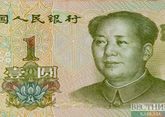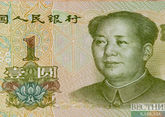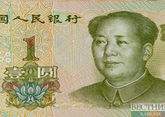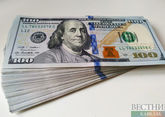China’s yuan inched up in early trade today, despite the central bank setting its official midpoint past the key seven to the dollar threshold for the first time since global financial crisis.
The People's Bank of China (PBOC) set the midpoint rate at 7.0039 per dollar prior to the market open, 43 pips weaker than the previous fix of 6.9996.
While this was the weakest central bank fixing since April 21, 2008, it was firmer than market expectations and seen as a signal that authorities wanted to stabilise the decline in the currency following this week’s sharp falls.
Broad weakness in the official guidance rate came after heavy losses in the spot yuan, as tensions between the world's two largest economies broadened to include foreign exchange policy with the United States earlier this week declaring China a currency manipulator, Reuters reported.
Offshore yuan hovered above record lows on August 8. Earlier this week, the onshore currency weakened past the psychologically important 7 per dollar mark for the first time in 11 years.
The onshore spot yuan opened at 7.0402 per dollar and was changing hands at 7.0485 as of 0224 GMT, 111 pips firmer than the previous late session close. Its offshore counterpart was trading at 7.0720 per dollar, firmer that Wednesday’s close of 7.0823.
Director of the MGIMO's Center for East Asian and SCO Studies Alexander Lukin, speaking with Vestnik Kavkaza, noted that the yuan's steady decline is determined not so much by U.S. measures as by internal causes. "China is experiencing difficulties in the economy, strong inflationary pressures, in particular, due to the fact that economic growth has decreased, and the state is solving many issues by printing money. The situation with the United States is also adding problems. Although it’s hard to say, there were times, when the rate was 1 to 8, and then it dropped a little. So everything depends on the situation with the economy inside China," he explained.
According to the expert, Washington has always accused Beijing of intentionally weakening the national currency, but it is not very profitable for China to depreciate the exhchange rate strongly. "It’s good for export, but then household incomes in foreign currency will decline, prices will go up. It can also lead to bad social consequences in the country. Therefore, I don’t think that they will use this mechanism actively," the director of the MGIMO's Center for East Asian and SCO Studies noted.
"A strong depreciation of the yuan would be bad for the Russian trade balance, because Chinese exports could grow. But since the ruble exchange rate is also declining, it can be mutually compensated," Alexander Lukin added.
The Deputy Director of the Institute of Asian and African Studies of Moscow State University, Andrey Korneev, pointed out that an unprecedented confrontation is taking place between China and the United States.
According to him, in fact, the United States is trying to prevent China from catching up with it, and then moving them from the position of world leader."
"Will the yuan continue to fall? I think Beijing will firmly defend its position, but at the same time will not provoke new rounds of confrontation," the Deputy Director of the Institute of Asian and African Studies of Moscow State University suggested .
Answering the question whether the yuan depreciated 'on its own' or as a result of the planned actions of the People’s Bank and the Chinese government, the expert expressed an opinion that both factors are present, that is, the market puts pressure on the course, and the Chinese authorities allow this to put pressure on U.S.
"What will happen next is very difficult to predict. Each of the parties intends to force the other party to give in. But it seems to me that even having reached an agreement, the rivalry will not end. It will be some kind of intermediate option, but this rivalry-cooperation will continue," Andrey Korneev concluded.










